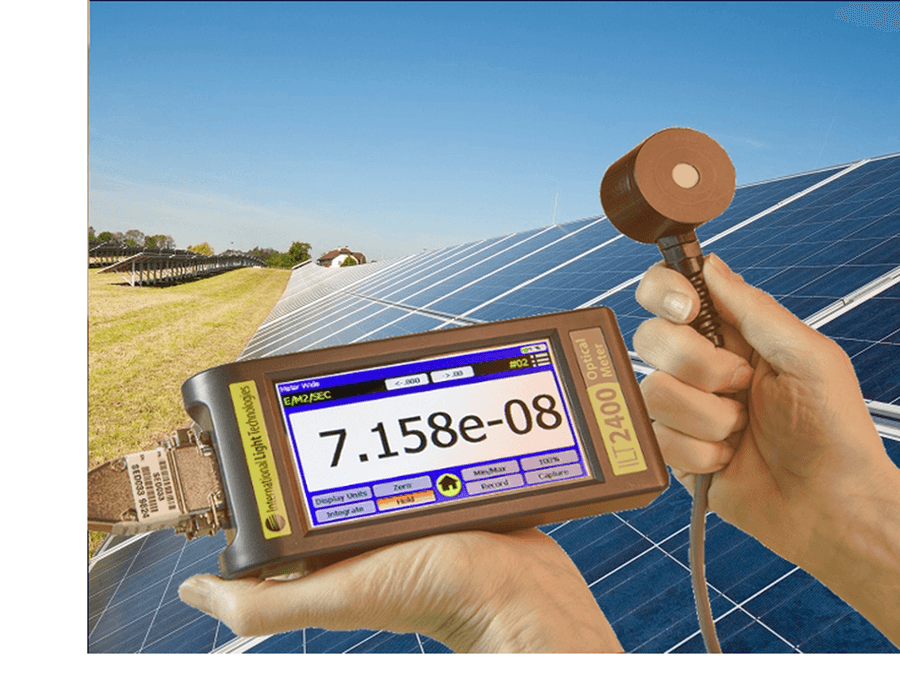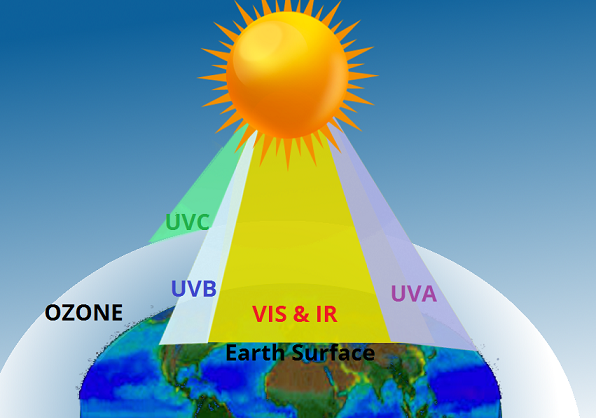
Can there be a more important light source in our lives than the Sun? Not likely. Just a giant flaming ball of gas at the center of our solar system. But the Sun is so much more than that to us: it heats our planet, drives the weather and ocean currents, keeps Earth from spinning out into space and provides us with food. Yet, for all of the positive benefits we derive from the sun, we get our share of negative ones as well. The same Sun that can keeps us warm and fed can also harm us and the materials around us with heat and harmful ultraviolet rays.
Solar simulators approximate the light output of the sun for research applications
The Sun is a highly unique light source with tremendous light output covering a huge spectral range from deep Ultraviolet-C (UVC) all the way up into the Infrared (IR). The longer wavelengths of the Visible (Vis), and IR are abundant on a sunny day.
The longer wavelenghts allows the rays to easily penetrating the atmosphere and reach the earths surface offering both light and heat. These wavelengths are also much easier replicate with traditional light sources.
The UV is broken up into 3 bands; UVC, UVB and UVA. Not all of the UV emitted from the sun is able to reach the earth. UVC which has a more particle and less wave like form, is filtered or absorbed by the atmosphere. UVC has a difficult time traveling through an oxygen rich environment, Thus leaving Ultraviolet-B (UVB), Ultraviolet-A (UVA) able to penetrate the ozone layer and reach the earths surface. UVB though less abundant than UVA is capable of reaching earth. With its shorter wavelengths it arrives in smaller volume, but it’s negative effects are actually received in greater quantities (for example skin damage and skin cancer). UVA has a wave form closest the that of the VIS range and is often times even seen as blue or purple light as you approach the 400 nm range. But even with its greater ability to reach the earth, it is still an unstable/unreliable source of UV energy.

Since the weather on Earth is unpredictable, and the Sun is often obscured by clouds, scientists, engineers, and researchers have turned to simulating the sun in the lab providing them with a more controllable and reliable light source. While the sun has an extremely broad output range and solar simulators are often unable to match the full emission spectrum, they do provide a more practical solution for many applications. Especially for applications where full spectrum UV, stable output, or long term exposures are required.
Many industries use solar simulators for research and development
Solar simulators produce a simulated solar spectrum for plant growth, material- degradation simulations, weathering tests for coatings, photovoltaic (PV) cell testing, sunblock evaluations, and window transmission studies. Steady state solar simulators are generally used in laboratory or production environments for precision testing and/or calibration of light-sensitive (e.g., photovoltaic) devices. Solar simulators are also used on terrestrial, aerospace and satellite products as a long-term simulated sunlight exposure system to test optical coatings, thermal control coatings, paints, etc. Pulse simulators make it possible to test large solar panels at a fraction of the cost of steady state solar simulators. Because the temperature of the solar cells under test is held constant, the need for thermocouple testing is eliminated, resulting in savings in both time and cost.
International Light Technologies has a full complement of powerful, easy to use, and highly accurate light measurement systems. Our system include a full line of spectroradiometers as well had hand held light meters, research grade radiometers, and datalogging optometers, covering a broad range from the UV (200-nm) out to the IR (1700 nm).
ILT systems are calibrated in our in house NIST traceable lab and include IS017025 accredited calibrations. Systems are available for measuring both narrow band and broad band spectral ranges including UVC, UVB, UVA, VIS, NIR and IR.
To learn more about ILT’s solar measurement products, visit our website at www.intl-lighttech.com, or call us at 978-818-6180.
